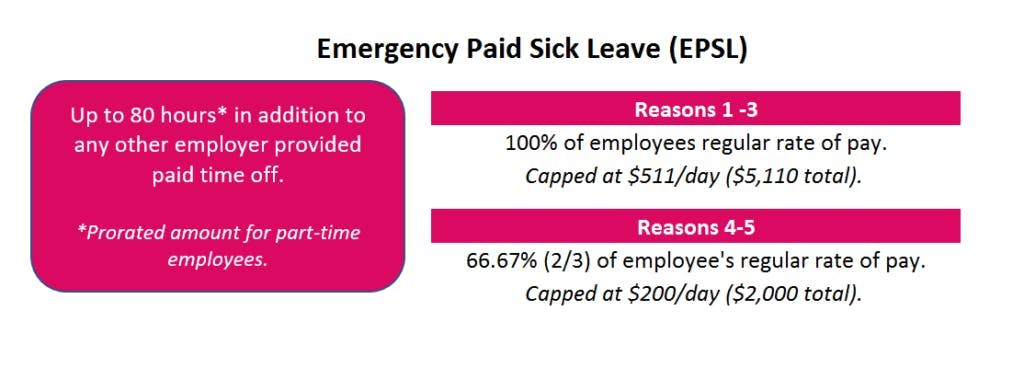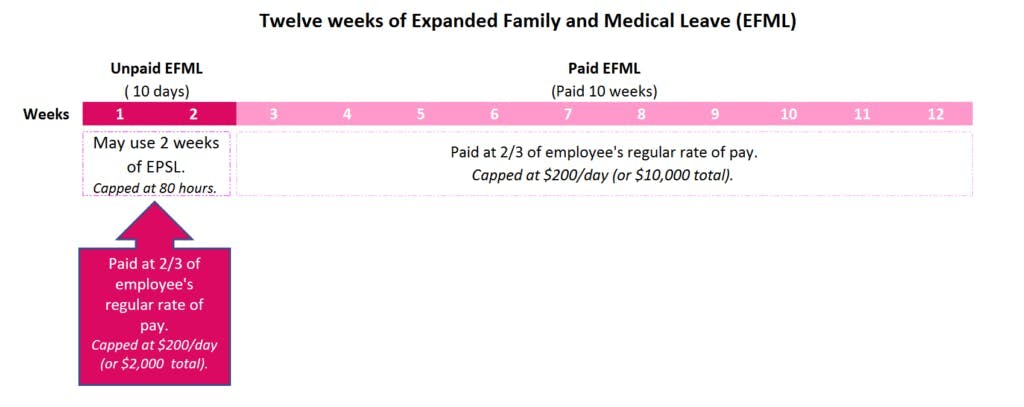What to Know Before an Employee Requests Time Off Under the FFCRA
By Newfront | Published May 13, 2020

Determining an employee’s eligibility for leave under the Families First Coronavirus Response Act (FFCRA) is new and exciting (actually, it’s complicated). The FFCRA requires private employers with less than 500 U.S. based employees and public employers to provide time off related to COVID-19.
Depending on the reason, an employee may take up to two weeks of paid (or partially paid) emergency paid sick leave (EPSL) and, if the employee has worked at least 30 calendar days, up to twelve weeks of partially paid expanded family and medical leave (EFML).
When can an employee request time off?
An employee may take time off because the employee:
Is subject to a federal, state, or local quarantine or isolation order.
Has been advised by a health care provider to self-quarantine.
Is experiencing symptoms associated with COVID-19 and is seeking a medical diagnosis.
Is caring for an individual subject to a quarantine or isolation order.
Is caring for a child whose school or place of care is closed or unavailable due to coronavirus-related reasons.
How much is the employee paid?
The payment amount is dependent on if the leave is taken for the employee or for a family member.
Although an employer may pay more, only the established limits will be considered for the refundable tax credits administered by the Department of Treasury.
What if the Company already provides paid sick leave or is a covered employer under the FMLA?
Both the EPSL and the EFML is an addition to what is already provided by an employer or required by federal, state, or local law.
A covered employer under the Family and Medical Leave Act (FMLA) would provide a total of 12 workweeks of FMLA leave and EFML in a 12-month period. Therefore, the amount of EFML available to an employee depends on how much FMLA leave was already taken in the 12-month period the employer uses for FMA leave.
The process:
According to the DOL, document the following for requests for EPSL and EFML, even if a request is denied:
The employee’s name;
The date(s) for which leave is requested;
The reason for leave; and
A statement from the employee indicating the reason the employee is unable to work.
If the request is because of a quarantine or isolation order, document the name of the government entity that issued the order. If the request is to self-quarantine, document the name of the health care provider who gave the advice.
If the request is to care for a child whose school or place of care is closed, or childcare provider is unavailable, document:
The name of the child(ren) being cared for;
The name of the school, place of care, or childcare provider that has closed or become unavailable; and
A statement from the employee that no other suitable person is available to care for the child.
Small businesses with fewer than 50 employees may be exempt from providing time off, for more information visit the DOL’s FFCRA frequently asked questions – refer to question #58.

Newfront
Newfront is a modern brokerage transforming the risk management, business insurance, total rewards, and retirement services space through the combination of elite expertise and cutting-edge technology. Specializing in more than 20 industries and headquartered in San Francisco, Newfront has offices nationwide and is home to more than 800 employees serving organizations across the United States and globally.



